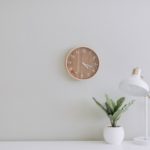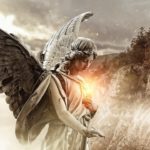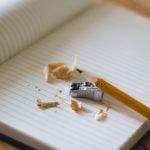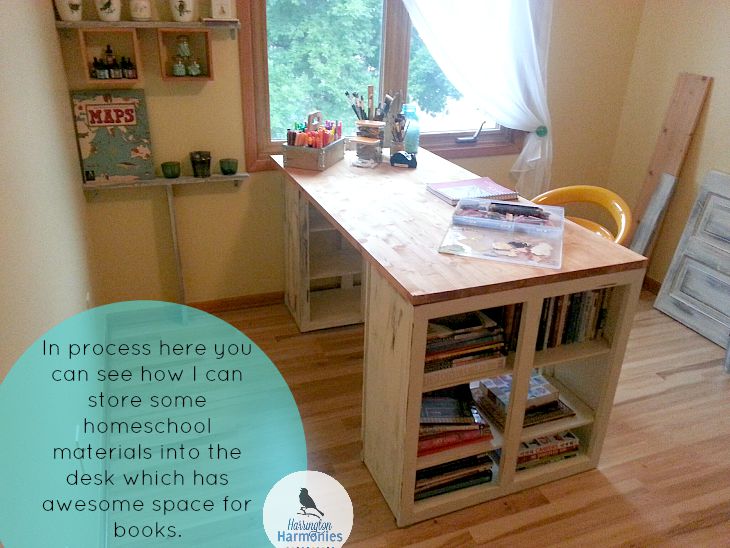
As we studied the art of Minoan and Mycenaean cultures, we read a little Greek mythology too. Masks and bulls seemed to dominate the study. For the literature component we read Theseus and the Minotaur from the book Greek Myths (Classic Starts Series). There are lots of other great books where you can find the story. See my list of living books for ancient history (easy readers).

**This project was inspired by an activity from The Kids’ Multicultural Art Book.
Vocabulary: labyrinth, minotaur, Crete, mythology, Minoan

Materials needed:
- 9″ paper plate
- newspaper strips
- liquid starch
- aluminum foil
- scissors and stapler
- masking tape
- egg carton, 2 egg sections
- 2 liter bottle
- tempera paint – white, black, brown and other desired colors
- paintbrushes
- decorative items such as yarn, beads, feathers, etc. (optional)
- string or yarn for hanging
Minotaur Mask Paper Mache Tutorial
[tweetthis]Make fun paper mache minotaur masks for Greek mythology project. #art #classicalhomeschool[/tweetthis]1. Cut two slits in bottom of paper plate. Overlap and staple the slits together. It rounds the bottom of the plate to makes a nozzle for the minotaur. So it makes the plate form the shape of an animals head.
 2. Sculpt horns for your minotaur out of aluminum foil. Make the ends where they will be attached flat. Staple them to the plate and reinforce with masking tape. Then tape on egg carton section eyes.
2. Sculpt horns for your minotaur out of aluminum foil. Make the ends where they will be attached flat. Staple them to the plate and reinforce with masking tape. Then tape on egg carton section eyes.

3. Use a 2 liter bottle to support your sculpture while you work. It’s quite flimsy so it’s necessary to have a support while working and while drying. Begin adding strips of paper after covering each with liquid starch. Remove excess before you apply. Crisscrossing strips and layering them make it stronger when it dries.

4. Cover entire area till well sculpted. With liquid starch, use your hands to form paper over rounded areas. This will make the entire minotaur face look smooth and leave no area uncovered. Cover it well with at least one layer and two layers or more if needed. Shape as you go, the plate will get very flexible the more wet it becomes. The more layers you use the stronger it will be when dry.
5. Allow to dry over night. Leave it on a bottle for support while drying, it’s very important because the plates got super flimsy and it ultimately created the shape for the bull head.

6. Once dry, we had to paint over the mask with white tempera just as a base coat to cover the newspaper text; so it wouldn’t bleed through.

7. Now the fun begins and your child can paint and decorate the mask as he pleases!
8. Use a string or piece of yearn to hang if you like to display in your homeschool or kids play room.
What Greek myth have you read in your homeschool? Could you make a mask to go with it?
Art Around the Ancient World- the line up:
The following lists each lesson by civilization, what each lesson’s focus will be, and the media/project tutorial. (These are subject to change.)
- Prehistory– Cave Paintings- Painting the Ancient Way
- Sumerians – Ancient Writing -Cylinder Seals in Clay
- Egyptians – Egyptian Art and Hieroglyphs- Multi Media/ Egyptian Headdress
- Assyrians and Babylonians –Near East Metalworking – Babylonian Art Lesson for Kids
- Phoenicians– Ancient Dyes- Purple Batik Cloths
- Hittites and Ancient Israel– TBA
- Ancient Africa– Akuaba Wooden Doll- Scratch Art
- Minoan and Mycenaean– Early Greeks-Paper Mache Masks ( You are here.)
- Persians– Persian Carpets- Paper Weaving
- Ancient China- Tangrams
- Greece- Pythagorus & Golden Age Greek Art – Tessellating Art
- Rome- Mosaics
Be sure to follow my Pinterest board too! The possibilities are epic!
Follow Stephanie @ Harrington Harmonies’s board Education | Art Around the Ancient World on Pinterest.
Linked with: Living and Learning at Home Classical Link Up























